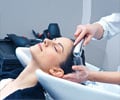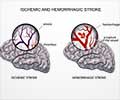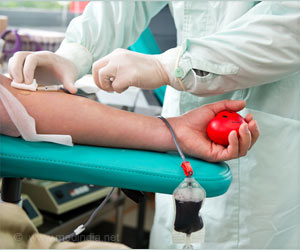A new smartphone app uses AI to analyze facial movements, detecting strokes with 82% accuracy within seconds.
- A new AI-driven app detects strokes by analyzing facial symmetry and muscle movements with 82% accuracy
- Early stroke detection is crucial for effective treatment and reducing long-term disability
- The app provides a real-time diagnostic tool for paramedics and first responders, enhancing rapid stroke identification
Facial expressions to identify post-stroke: A pilot study
Go to source). With an accuracy rate of 82%, comparable to that of trained paramedics, this AI-driven technology could revolutionize stroke diagnosis and treatment, especially in critical early moments.
The new AI app for stroke detection can analyze facial expressions and muscle movements to identify strokes faster than it takes to order a cup of coffee! #healthtech #strokeawareness #AIinhealthcare #medindia’
AI Tools Can Detect Face Asymmetry in Stroke
The facial recognition tool leverages advanced AI algorithms to scrutinize facial symmetry and muscle movements. Key indicators of a stroke include disorientation, lack of muscle control, decreased speech, and diminished facial expressions (2✔ ✔Trusted SourceIschemic posterior circulation stroke: a review of anatomy, clinical presentations, diagnosis, and current management
Go to source). The software focuses on these symptoms, particularly noting any asymmetry in facial movements, such as an uneven smile, which is a common sign of a stroke.
The research team, led by Guilherme Camargo de Oliveira from the Royal Melbourne Institute of Technology (RMIT), detailed their findings in the journal Computer Methods and Programs in Biomedicine. The study involved video recordings of facial expressions from 14 stroke survivors and 11 healthy participants, allowing the AI to learn and distinguish between normal and stroke-affected facial movements. The tool's impressive accuracy rate of 82% makes it a promising aid for rapid stroke detection.
Importance of Early Stroke Detection
Impact on Treatment and Outcomes
Early identification of a stroke is crucial for effective treatment. Prompt medical intervention can significantly reduce the risk of long-term disability and save lives. According to Dinesh Kumar, a corresponding author and professor at RMIT, many strokes are missed in emergency departments and smaller regional centers. This gap in diagnosis underscores the need for real-time, user-friendly diagnostic tools that can be used in various settings, including at home and by first responders in suboptimal conditions.
Statistics on Missed Diagnoses
Studies reveal that nearly 13% of strokes are missed in emergency departments and community hospitals. Additionally, 65% of patients without a documented neurological examination experience undiagnosed strokes. These statistics highlight the potential impact of the new AI tool in improving stroke detection rates and ensuring timely medical care.
Will AI Tools Replace Clinical Tools to Detect Stroke?
While the newly discovered tool would not replace thorough clinical diagnostic tests for stroke, scientists believe it could assist identify people who require treatment much sooner. "Studies indicate that nearly 13% of strokes are missed in emergency departments and community hospitals, while 65% of patients without a documented neurological examination experience undiagnosed stroke," said corresponding author Dinesh Kumar, an RMIT professor.Future Developments and Improvements in Stroke Diagnosis
Enhancing Accuracy and Reliability
The current accuracy rate of 82% is impressive, but researchers are continually working to improve the tool's reliability. Further studies with larger participant groups are planned to refine the AI algorithms and enhance the tool's diagnostic precision.
Integration with Other Medical Technologies
Future developments may also include integrating the facial recognition tool with other diagnostic technologies, such as portable EEG devices or blood flow monitors. This integration could provide a more comprehensive assessment of stroke symptoms and further increase the tool's utility in various healthcare settings.
"This rate may be substantially greater in smaller regional centres. Given that many strokes occur at home and that first responders frequently offer initial care in suboptimal conditions, there is an urgent need for real-time, user-friendly diagnostic tools," Mr Kumar stated. The development of a smartphone-based facial recognition tool for stroke detection marks a significant advancement in medical technology. With its ability to analyze facial symmetry and muscle movements in real-time, this AI-driven application offers a highly effective and accessible solution for early stroke identification. As researchers continue to refine and improve the tool, it holds great promise for enhancing stroke diagnosis and treatment, ultimately saving lives and reducing the long-term impact of this serious medical condition.
References:
- Facial expressions to identify post-stroke: A pilot study - (https://pubmed.ncbi.nlm.nih.gov/38692251/)
- Ischemic posterior circulation stroke: a review of anatomy, clinical presentations, diagnosis, and current management - (https://pubmed.ncbi.nlm.nih.gov/24778625/)
Source-Medindia










